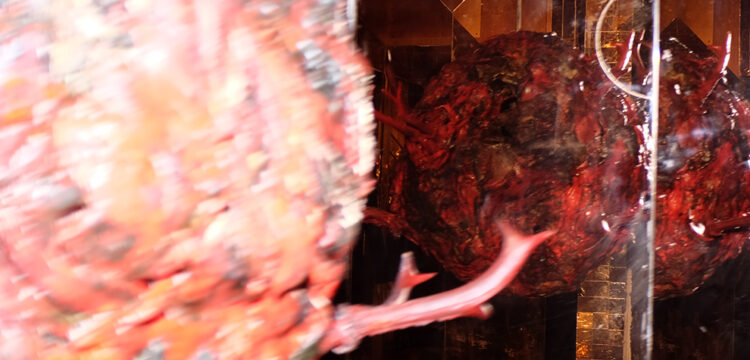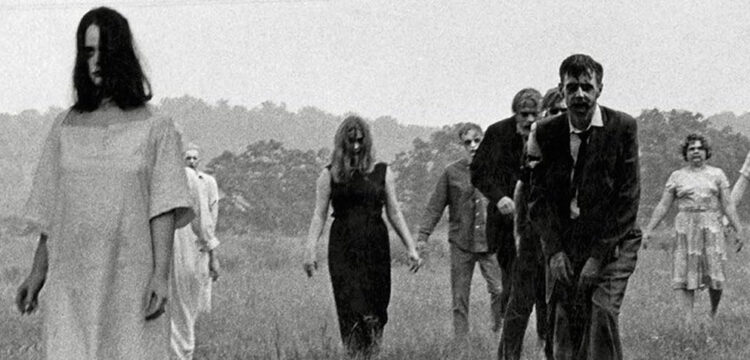The Un-bite
Guerrilla against the unceasing hostilities of the living—Part #3
The Institute of Things to Come is an art programme aimed at investigating forms of imaginative speculation as cultural strategies and methodologies for critical positions, founded in 2017 by curator Valerio Del Baglivo. Its current 2020-2021 program, entitled “The convention of restorative anatomy and prosopopeia” questions the categories of alterity in opposition to current politics of sovereignty, national belonging, and heteronormative approaches in Europe and beyond.
Along these lines of research, The Institute started a collaboration with NERO and invited curator Michele Bertolino to publish a series of texts all along 2020-2021. Derived from conversations with experts in zombie studies, queer theory, post-porn productions and anticapitalist imaginaries, these essays discuss the figure of the zombie as a critical entity, a material paradox and an oxymorical body, aiming at developing pragmatical tools for a collective body.
My obsession … to have what he had. To be part of
him. To carry him with me, inside of me, forever.
—Patrick Califia, Skinned Alive
A few weeks ago, during a studio visit, somebody mentioned Shivers (1975), whose original title was Orgy of the Blood Parasites—one of David Cronenberg’s first movies. I went home and watched it. Overall, the movie confirms Cronenberg as the champion of body horror. Although it cannot be entirely considered part of the genre, it nonetheless flirts with the narrative of zombies, taking us back to the exact place where we left off.
We sailed a wasted sea, whose inhabitants were never subjects, but only distinct corporealities. We began by following Lauro as she underlined the paradoxical nature of those bodies—open and intermeshed—which host no subjectivity. Then we moved to antisocial queer theories—through the words of Edelman and Bersani—and we redefined the zombie paradox through sinthomosexuality, with reference to the death drive, the only true inhabitant of those corpses. Dwelling into jouissance, they are driven beyond language and logic. Time dissolves, barging them into the perpetual land of hunger. Therefore, politics surrenders desire as its engine and loses its future-oriented logic, wrecking society. Yet, through zombies, I glimpse an alternative. They always act as a mob, assembled via their impulse, gathered through their intimate contagion. Thus, intimacy and sexuality—which sprouts as the place where jouissance can prosper—could represent ways we could use to recollect hints capable of drawing a different shape for our future collective body.
Shivers portrays sinthomosexuals as they are: each in the singularity—“distinctive shape”—of their sexual drive yet each acting as part of a whole that unwittingly moves and operates only as a group. The movie follows the events taking place at the Starliner Towers, an high-rise apartment building just outside Montreal. The residents are being infected by a parasite—created by Dr. Emil Rolles and Rollo Linsky to take over the function of a human organ—that turns them into mindless, sex-addicted fanatics and spreads through their lust. These fiends limp around craving physical contact, kisses, penetration and sex just like zombies would crave brains. Their reproductive system—namely the pathogen’s necessity to duplicate—guides them, pairing their own intimacy with contamination. In the last scene, Roger St. Luc (Paul Hampton) tries to evade the apartment complex, now overflowing with sex maniacs, via the swimming pool. Yet, he is dragged into the pool and infected, while all the other bodies strip off their clothes and enter the water for an ultimate orgy.

It immediately appeared to me as a literal translation of the unredeemable jouissance I have been analyzing. As I said, jouissance exploits sexuality as an enjoyment at the expense of social order, as a locus beyond meaning and interpretation, as a mere narcissistic fuck—for its being directed by a self necessity, namely the expansion of the pathogen or, if we want to get out of the metaphor, jouissance for jouissance’s sake. Envisaging a communal living from these starting points may sound provocative, yet I believe it is exactly where we have to commence.
Perverse body
As a matter of fact, through Alaimo’s considerations, I described the zombie body as transversal and porous, entangled with the “stuff of the world”. Posthumanism, ecology and material feminism have led me to the conclusion that not only zombies are getting rid of the subject’s position, they are also exposing the permeability of the body’s boundaries, urging for a new bodily topography. The patriarchal discourse has ascribed a biopolitical privilege to some organs, the genitals in particular. Paul B. Preciado has extensively argued that our sex-gender-construct is based on aesthetic visibility, assigning prominence to the penis—a donor—while confining the vagina to the role of receptive hole and ostracizing the anus and all the other body parts as leftovers, which eventually define perversions. Yet, the intermeshed bodies of zombies untie such preposterous inferences, assuming perversion as their guide—etymologically pointing to a radical turn around, a change in site. Bruce LaBruce, post-porn movie director, has recollected and exploited the perverted capacities of zombies in L.A. Zombie. François Sagat, impersonating the zombie, wanders around L.A. and fucks with bodies, dead ones, for the most part, to reanimate them—as a consequence, the movie can be accounted for its birth-giving understanding of the death drive. However, what interests me lies somewhere else. Sagat never fucks the supposed genitals, rather he opens wounds creating new holes through which he enters the body: heads, hips, legs and mouths become sensible points, detaching from normativity and genderization.
Zombies erase those prejudicial distinctions, addressing the whole body as their site for bodily interconnection. As locus for non-verbal communication, their mouth bites, penetrating beyond defined boundaries. Zombies trace a new geography onto which they can enact their drive, challenging intimacy as an unforeseen outcome of their voracious jouissance.
Thus, paradoxically, I believe that a zombie-driven-intimacy will unlock those pragmatic tools I have been asked for, finally reshaping collectiveness and defining a pars construens in the zombies’ attitude. I will get there, step by step.
Biting, fisting
First, I need to define intimacy as a form of relationship. Following Staci Newmahr’s Playing on the Edge, I thus identify intimacy with “the cultivation of a belief in the privacy of a particular experience”. Intimacy gives access to that which is normally not apparent, available. It allows for the sharing of secrets, being the marker for a profound relationship. Yet, out of a subject-oriented theory, intimacy represents a wound that allows us to enter a space that was forbidden, it breaks a barrier. Thus, intimacy does not necessarily stand for a pleasant act for all the involved parties: “to violate, and be violated, are intimate experiences”—Newmahr concludes.
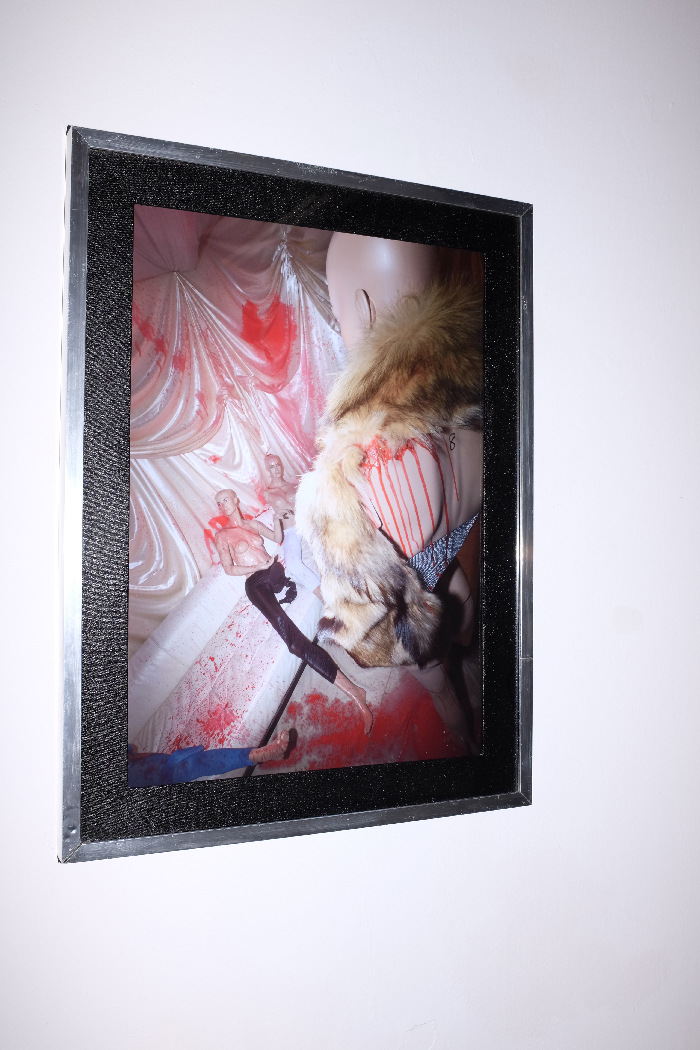
Trevor Grizzell adapts Newmahr’s considerations when he refers to the zombie’s bite, which speaks for the jouissance and serves as a tool to penetrate boundaries. The bite—Grizzell argues—is an intimate act for both bodies involved. The same act that allows the zombie to infect its victim allows the still-human subjects to experience and foresee their future, but still unknown, way of being. In a more radical way, which should be clear by now, the intimate violation of the bite—and the contagion which automatically derives from it—disrupts the integrity of the human body, preparing it for the inevitable openness and availability that zombies represent. The bite literally goes under the skin, exceeding the limits of the body itself. Zombie’s intimacy is thus both the encounter with that which lies beneath another’s skin and, for those who are bitten, the other side of the same possibility. It is a posture: an intermeshed intimacy, made of organs, fluids, blood.
Monique Wittig—French philosopher, material feminist and activist—published The Lesbian Body (1973) a work of lyric poetry. Erotic and theoretically engaging, the poem explores intimacy and sex as gentle yet unredeemable acts of dismemberment which transcend bodily and relational limits. As Elliot Evans sharply points out in Your Blood Dazzels M/e, Wittig writes of an eroticized violence which becomes the strategy for “an absolute material synthesis of two bodies in a single organism.” “Eating each other bone by bone, lifting the other’s skin layer by layer, licking their internal organs, and devouring flesh” are body perforations resulting in a movement towards one another which redefines intimacy and closeness as bodily possession. Wittig highlights a multilayered understanding of what intimacy happens to be, surprisingly translating zombie’s closeness into lesbian (or queer) sex.
While reading The Lesbian Body, trough Evans’ guide, two elements struck me. The first was Wittig’s perforation of the body’s borders, which does not merely end as a confusion of bodily fluids and parts, but calls for a theoretical redefinition of the self—both as a physical and grammatical entity. The singular first-person pronouns je and mon are always split by a bar—j/e, m/on, m/a—denoting the very permeability of the individual subject. As a matter of fact, j/e indicates the invasion of the self or, conversely, it stands for the body’s unrestrained hunger for the other’s flesh and liquids as a way for self-dissolution—resulting in the grammatical morphology of the death drive. Wittig gets rid of the subjects. Her landscape is inhabited by mere bodies, continuously interlocking, infecting and ingesting one another—impressively resonating with the destruction of the subject by zombies, which I have accounted for.
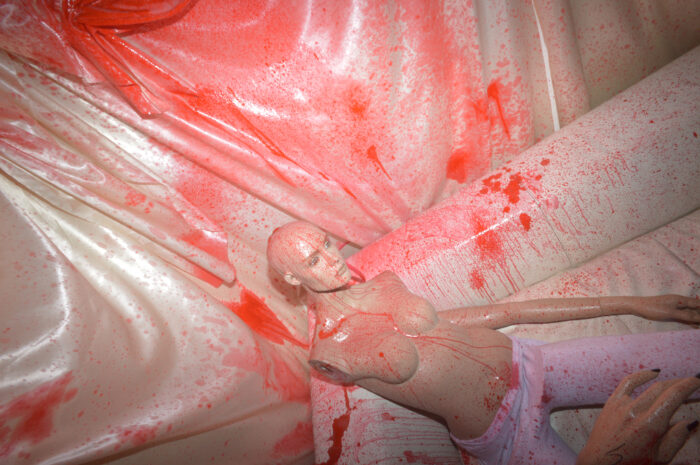
Secondly, intimacy is redefined as a communion: a physical sharing of the same space and time. Perforations occur in your body and m/y body joined together. Evans explores, besides Wittig’s work, Patrick Califia’s writings. Co-founder of Samois (a lesbian BDSM collective) and author of Macho Sluts, Califia—who writes on the breach of the AIDS crisis—shares a seemingly attitude, describing bodily fusions, bareback sex and sadomasochistic practices as paths that lead towards an intermeshed and fluid intimacy. In the short story Holes, he describes the experience of fisting as a ritual, capable of joining him with his partner “like a Siamese twin”, his statement being “I wanted to share this communion with him”. As Evans argues, the term recalls religious significance: during the mass, the holy host and the wine summon the presence of the body and the fluids of Christ. Communion is, thus, an act of incorporating that body into one’s own. With no surprise, communion stands for intimacy at its most—a verification of the other’s presence, retained within our own. Incorporation, through bites, fisting and wounds, defines intimacy in its corporeal domain.
Contagion
It may feel like we are drifting away from zombies’ studies. Yet, these recurring issues led me to believe that a layered interpretation of bodily intimacy can allow us to understand it as a political force. Thus, we should prepare to accept the inevitable: the bite of the zombie represents the first brick onto which we can build a new communal living.
Zombies, however, also pair intimacy with contagion. Their bite always results in a communal merging of internal ecosystems which causes permanent transformations. By eating another’s body, their jouissance inevitably infects us. I catch your sickness, you know it I am so sick from you that I am extremely happy—as a dazzling Wittig writes.
Yet, infection could be read as generosity. Califia’s Skinned Alive tells of a futuristic dystopia where full body suits are worn at all times. The protagonist opposes such oppression by seeking out skin contact and sexual intercourses free from that protective film. Specifically, he craves unprotected sex with those infected with a deadly disease, the purple plague—which unsurprisingly evokes HIV. Unafraid, he desires “what he [the partner] carried invisibly circulating in his body fluids and tissues,” starving for his semen—“an emblem of generosity and freedom, nothing to be terrified about.” In other words, Califia’s protagonist affirms breeding as an act of generosity. Thus, contagion is redefined as “sharing something of oneself with another, the generosity of opening one’s bodily borders to another, and to otherness.”
Openness and contagion reformulate intimacy as a communion that leaves traces irremediably reconfiguring each individual’s own corporeality. Intimacy happens at the expenses of the bodies involved. And, as it should be clear by now, I’m talking of an impersonal intimacy, since there is no subject to deal with or to know but only bodies, fluids, blood and viruses.
Therefore, how can our distinct, yet intermeshed, bodies enact impersonal intimacy? Tim Dean’s Unlimited Intimacies provides some clues for an answer, while raising understandable concerns. As a member, Dean researches the bareback community: a wide community, post-racial and post-class, yet mostly western, which fucks without protection, constantly risking, if not openly seeking, HIV infection. He carefully portrays an impersonal bodily intimacy that sprouts from a voracious jouissance which literally pairs with a death drive, which in this case comprises the death of the body. Barebacking “entails a discipline of challenging to the point of dissolution an individual’s boundaries, in order to achieve boundlessness”. It facilitates the access to an impersonal intimacy which disentangles intimacy “from personhood and from the epistemological imperative to know the other.”
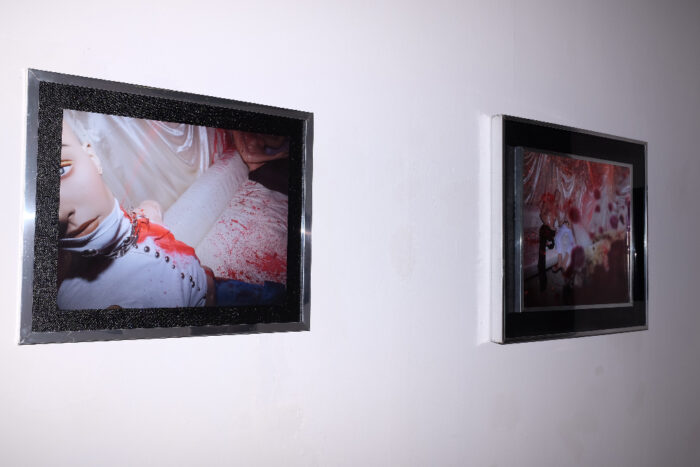
The bareback subculture comprises participants widely aware of the risk involved in their practice: outlaws—as they consider themselves—uninterested in the right-based TLGBQIXYZ discourse, who claim only “the right to fuck whom and how they wish”. Indeed, their aim is to resist homonormativity and confront health as an instrument of biopolitical power. In short, the community comprises bug chasers and gift givers. Gift givers, or “gifters”, are HIV+ men willing to consensually inseminate the bug chasers with their virus. Of course, my description suffers from superficiality: frequently including rites and liturgies, this subculture’s practices are much more layered than what I could ever express in these few words. Yet, at the most basic level, the bareback community involves an act of communion that literally pairs intimacy with contagion and generosity. The bug chasers—namely those who want the human immunodeficiency virus inside their bodies—willingly seek seroconversion, they “deliberately have incorporated an invisible microbe into their sexual practices and relationships.” They fuck with other men, yet they fuck with viruses and fluids.
In other words, they challenge the death drive by being it, not only the haunting force that guides them—through an unrestrained jouissance—but reframing it as an over-productive act which deals with excess and life. As I mentioned earlier, L.A. Zombie by Bruce LaBruce is a fitting portrait, assigning a birth-giving power to a potentially lethal intercourse. Indeed, through insemination, gift givers “do not want to die but to give birth and bug chasers apprehend hiv less as a harbinger of death than as a complex generator of life in its own right.” Through contagion they assemble new relations, solidifying their horde of bodies. Barebackers act out of any metaphors, embracing “human finitude that modern life has become expert in disavowing. They are fucking without limits precisely because they don’t want to live forever.” At least at a microbiological level, they do intermesh dead and alive tissue, approaching a radical transformation of their own bodies: they found their horde.
Viral horde
I look at bareback communities with no provocative intent. Their complex social structure, layered rituals and profound beliefs appear to me extremely consonant with the theoretical path of subject-dismemberment and collectiveness-creation which I have been following. They already embody the tools we received from zombies to re-envision society and the self. Yet, we must take one last step.
Even if bareback subculture often involves the paradoxical perpetuation of mainstream values—the bug chasing is regarded as an act of bravery and masculinity—Dean highlights some radical changes in their community which enact with respect to our necropolitical world. As a matter of fact, barebackers’ individuality dissolves. Not only the architecture of their meetings—sex clubs, dark rooms, cruising spots—militates against their self-consolidation: wondering around, those flâneures lose themselves in the stream of bodies. Most importantly, the very participation in the community demands its members to risk their lives, thereby asserting that the perpetuation of the group, the horde, is preferred to the survival of its singular parts.
They establish their community in the interiority of their fluids and bodies. They sacrifice individuality for the sake of collectiveness, existing as bodies of the drive, guided by the carnality and hunger of their jouissance. As a matter of fact, the barebackers may be that revolutionary zombie horde which I have been looking for, grounding a universal relatedness “in the felicitous erasure of people as persons.”
Still, their commitment cannot be universally met. Yet—following Wittig and Califia—practices in the bareback communities help in reconceptualizing jouissance and the death drive as a generative impulse. Finally, zombies’ hunger—as dismantling, excessive and anti-economic as it can be—can be seen as the revolutionary instinct onto which different social bonds are rebuilt. Intimacy appears to be the unforeseen result of that blossoming jouissance. Yet, it is redefined as impersonal, bodily, and it pairs with contagion, assembling a community based on bodily substances, commonality and physical communion. Such an impersonal and viral intimacy allows for a utopian reimagination. Yet, such a utopia could not evolve in the future—(perished, as Edelman explained, under the bludgeonings of jouissance)—but it is already happening as jouissance nullifies temporality creating the queer and now.
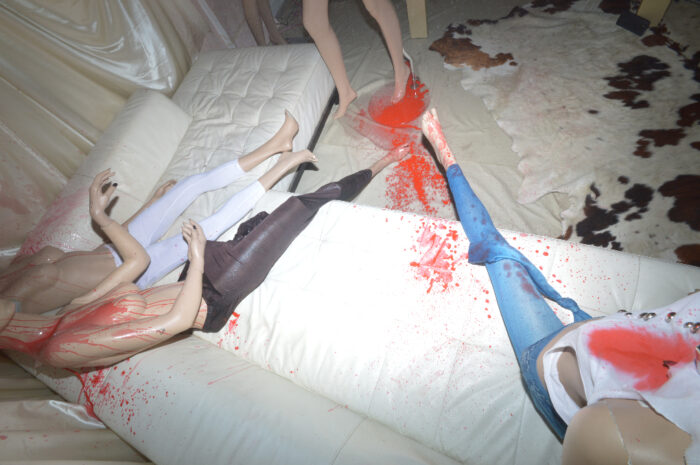
Ultimately, such an intimate collectiveness redefines the very idea of kinship. Donna Haraway’s renowned motto “make kin, not babies” invites the consolidation of “enduring mutual, obligatory, non-optional relatedness that carries consequences”, responding to ecological, ethical and future-oriented concerns. By playing with bodily fluids, transforming physicalities and irrevocably contaminating them, zombies propose alternative forms of social interaction. They are the embodiment of an intersectional group that, by re-centralizing impersonal intimacy, displaces communities as something internal, by opening their bodies to intimate relations with not-only-human life. Zombies—their intermeshed, open, transcorporeal anatomies—define a community of bodies permanently inhabited by otherness.
Such a community is founded on receiving, prioritizing passivity over activity: in order to bite, one has to be bitten. Its values rest on an aesthetic of desubjectivation and openness: their members are driven beyond their individualization principle, relying only on sensible perceptivity and immediate enjoyment at the expense of the liberal and ethical subject. Self-disinvestiture becomes body-expansiveness. Their ethic unfolds as bodily impersonality: lost in the nameless, faceless, post-racial, -class and -gender crowds, they expose themselves to penetration and, conversely, they invade. They are permeable and trans-corporeal objects, blended with their surroundings, intermeshed with death and life.
As a matter of fact, from the margins both of our trash imagination and real social “order”, zombies and queers scream unafraid—intimacy, beyond personhood, commits to bodies only, building communal alliances, a feeling (and a space) for a-identitarian politics, where flesh, blood and liquids can come together in a collective body.
*The visual essay accompanying these words is specifically developed by MRZB, a collective based between Torino and Amsterdam. Their collaborative and nomadic studio-practice relies on an aesthetic and affective research of the peripheral, the marginal and the discarded.




